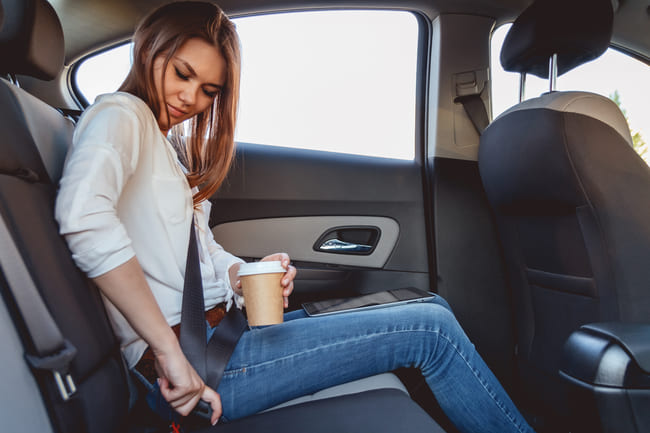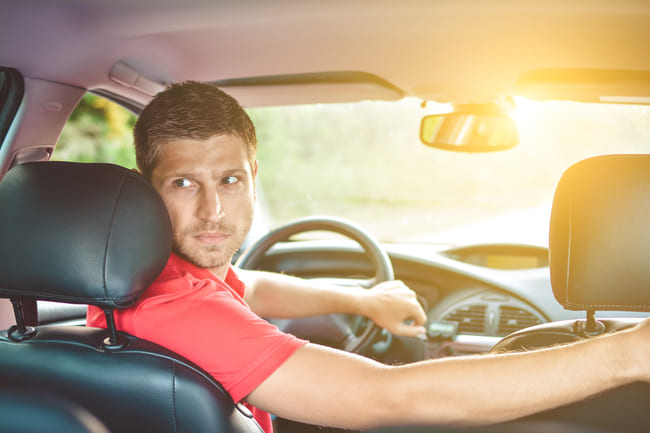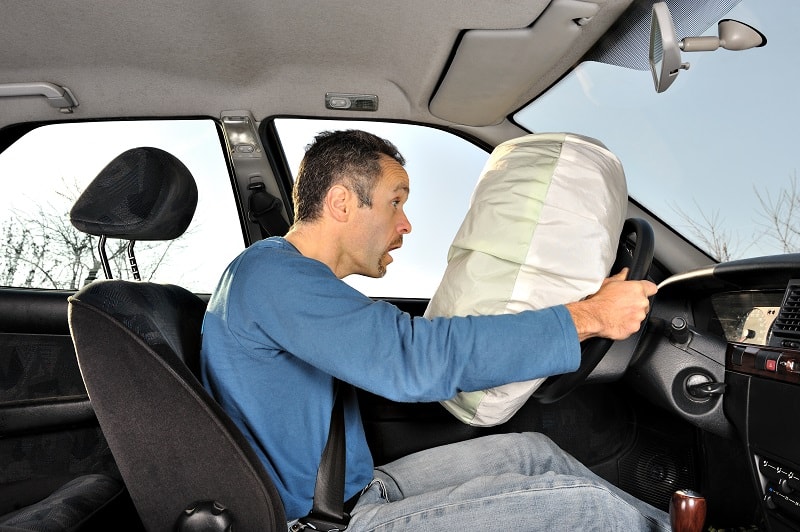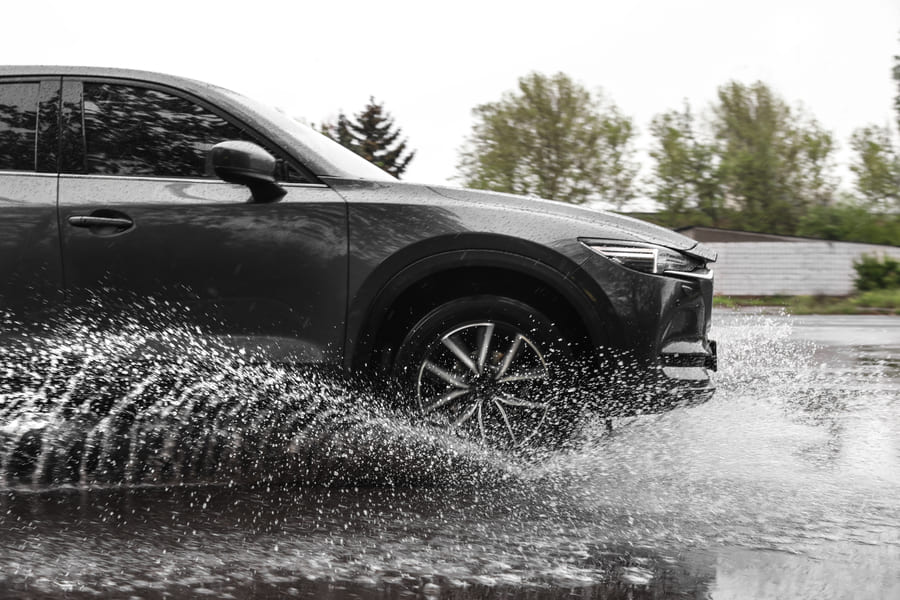
Strap yourself in for all you need to know about seat belts.
What do kangaroos, Hugh Jackman, and the seat belt all have in common? They’re all Australian exports…at least sort of. Victoria, Australia was the first place in the world to introduce legislation making seat belts compulsory in all passenger vehicles in the 1970s after numerous studies had proved that they reduced injuries and fatalities in road traffic collisions. The USA followed in the 1980s and the rest of the world caught on pretty quickly.
Today finding a car without seat belts is a pretty strange experience. As a friend’s dad took me for a spin in his classic Aston Martin when I was a kid, I remember my muscle memory making me reach down to the seat and my shock as I found nothing but the leather upholstery.
There’s a good reason for cars to be fitted with seat belts and the law regarding them is there for a reason. There isn’t just one type of seat belt, however, and here we are going to give you all the information you need on the different types of seat belts, what they do, and what the laws regarding them are. Buckle up and let’s get started!
What are seat belts for?
The primary, and relatively obvious, purpose of seat belts is to decrease the chance of injury or fatality for passengers in the case of a crash or collision on or off the road. The seat belt keeps passengers as static as possible despite any sudden stops or changes in momentum. When a car hits something, it will lose its forward momentum. Anyone in the car, however, is travelling at the same speed and will not lose their forward momentum in the crash. That’s where the seat belt comes in. Correct seat belt use will keep you in place so that it is less likely that you hit the dashboard, wheel, or seat in front of you.
If it is worn properly, a seat belt spreads the stopping force across the body of the person wearing the seatbelt, particularly the pelvis and rib cage. These two areas of the body are more sturdy and stable than other parts, so by directing the force there, the belt minimises the effect of the crash on the body. The seat belt’s webbed fabric is strong but flexible and this should allow a small amount of movement when working properly, again to minimise injury or impact. It needs to fit tightly though.
To give you an example of this,being unrestrained in the back of a car during a crash at 30mph means that the force of hitting the seat in front would be between 30 and 60 times that of your own body weight. That is a lot of force!
Even though you might be a safe driver, there is no guarantee that other reckless, casual or aggressive drivers will obey street signs and traffic rules. It might not be a collision, but suddenly being cut up by someone or another driver failing to give right of way can force you to make a sudden or emergency stop. In these cases, your seat belt will protect you from head and neck injuries.
Seat belts also offer a stable driving position. This makes sure you don’t move when cornering hard and helps you to focus on driving safely and reduces the risk of obscured vision. A seat-belt wearing driver is usually, therefore, in better control of the wheel when having to make sudden forced maneuvers, having to forcefully apply brakes or having to react to other difficult scenarios or obstacles on the road.
With all this in mind, ultimately the seat belt is going to save you money too. If you still need to be convinced to wear one despite knowing that it can keep you safe, think at least about the costs of medical emergencies, the loss of working hours if you are injured, and the cost of treatment for disabilities due to accidents. It shouldn’t be your main reason for wearing one, but it is certainly true that having an injury is going to cost you money.

What does the law say?
Sometimes people complain that seat belts are uncomfortable, are too tight, or that they don’t need to wear one as they are only popping to the shops or heading to a friend’s down the road. Unfortunately, the law doesn’t agree and there are strict seat belt laws, although there are some key exceptions to seat belt UK law.

Under the law, if the vehicle seat you are sitting in has a seat belt fitted you have to wear it. Similarly, only one person can use one seat belt at a time. This applies to both front and rear car seats. Failing to follow this legislation can result in a fine of up to £500.
In most cases, you must also wear a seat belt when pregnant. There could be some circumstances in which your doctor gives you an exemption, but generally you have to wear one at all times.
Wearing a seat belt when disabled is also mandatory under the law. Again, you may be exempt, but this exemption will have to come for your doctor. You may also have to adapt your vehicle so that this is possible.
Some older vehicles do not have seat belts fitted (the classic car I mentioned earlier). You cannot carry any children under 3 years old in this type of vehicle where there are no seat belts. Child passengers over 3 years old must sit in the back seats during a journey.
Seat belts for Children

There are also rules for all children travelling in the car with you, regardless of age.
Children under 13 or 135 centimetres tall must be seated in a child car seat appropriate for their height or weight. If they are over 135cm or 13 years of age, they should wear a seat belt.
If this doesn’t happen, the driver of the car receives the same fine as if they had not been wearing a seat belt.
Situations where you do not have to wear a seal belt
There are certain instances where you do not have to wear a seat belt in your car.
Medical Exemptions from wearing seat belt
Given that you have proof of permission from your doctor, there are also a set of several medical reasons why you might not have to wear a seatbelt.
Doctors can issue a ‘Certificate of Exemption from Compulsory Seat Belt Wearing’ and you have to keep this in your vehicle while driving. The police will ask to see it if they stop you for driving without a seat belt and you will need to inform the vehicle insurer if you have a medical reason for not wearing a seatbelt.
Different types of seat belt
The typical modern seat belt has a strip of fabric that fastens around the driver or passenger. It is connected to a retractor. The retractor is designed with a spool that the fabric winds around. When the user pulls the belt, the spool turns counter clockwise and allows the fabric to be moved further out. When the seat belt is released, the belt winds back up on the spool. This rewinding action is due to a spring that provides the rotation force to the webbing spool.
The retractor also has a seat belt mechanism designed to lock the belt into place if the car comes to a sudden stop, which causes the seat belt to tighten firmly around the passenger. This stops any unwanted movement. There are a couple of main types of seat belt that cars can be fitted with.
Also called a lap belt, the 2-point seat belt goes directly across the user’s lap to connect with the buckling mechanism, and has no shoulder harnesses. We often find these in buses or in the middle seat of cars, but otherwise they are fairly uncommon as they do not offer the safety and support of other types of seat belt.

A 3-point seat belt is a step up from this and has a sash that goes over the shoulder of the user, then crosses their lap. This offers more support for the body and more space for the pressure to be spread in a collision. These seat belts distribute the force of an impact across the chest, pelvis, and shoulders, decreasing the risk of injury for users in an accident. The design prevents more injury than the lap belt alone so the 3-point belt is the one predominantly installed by auto manufacturers.
There is also a 4-point seat belt that has two shoulder straps instead of one. This custom style belt is also known as a racing car seat belt. They are similar to those found in a child’s car seat. The difference between them is that the car seat has a strap that goes between the legs; the racing car seat belt does not.
When it comes to animals, there is no seat belt for dogs, but they should be secured too using an appropriate restraint or put in a dog box. This goes for other pets too.



















Comment